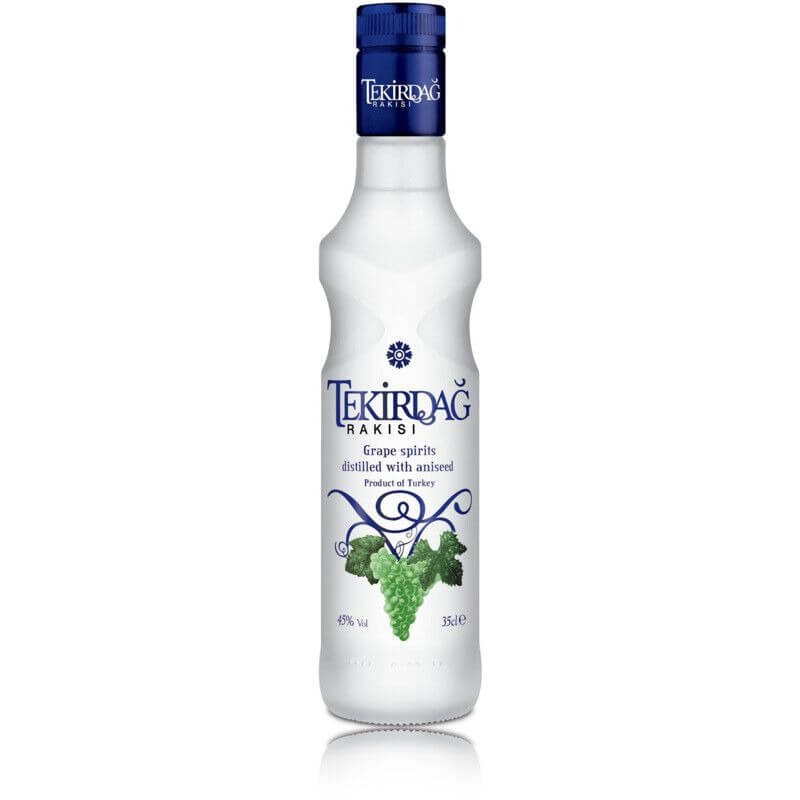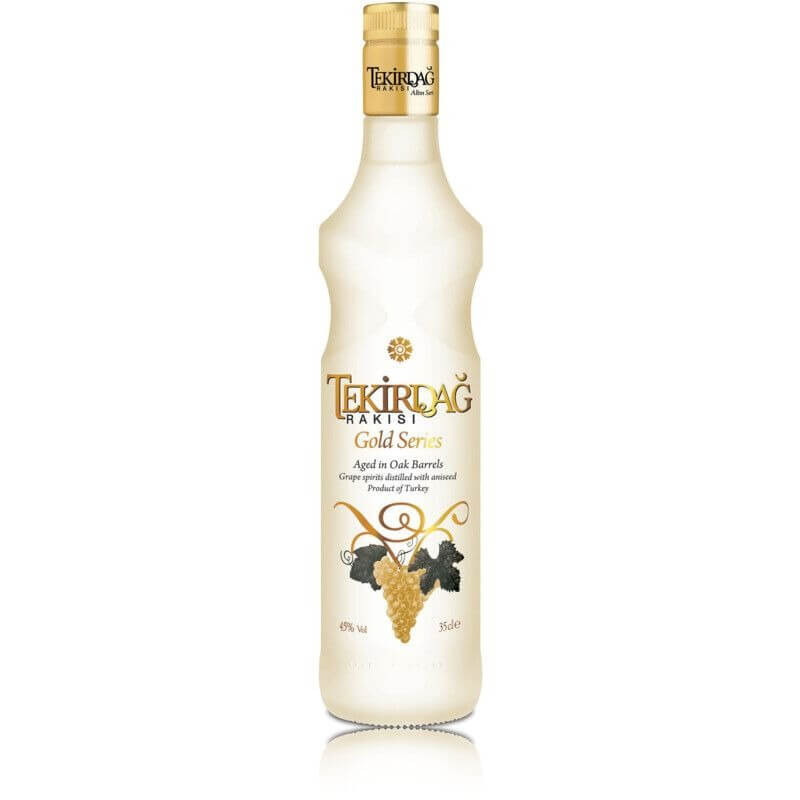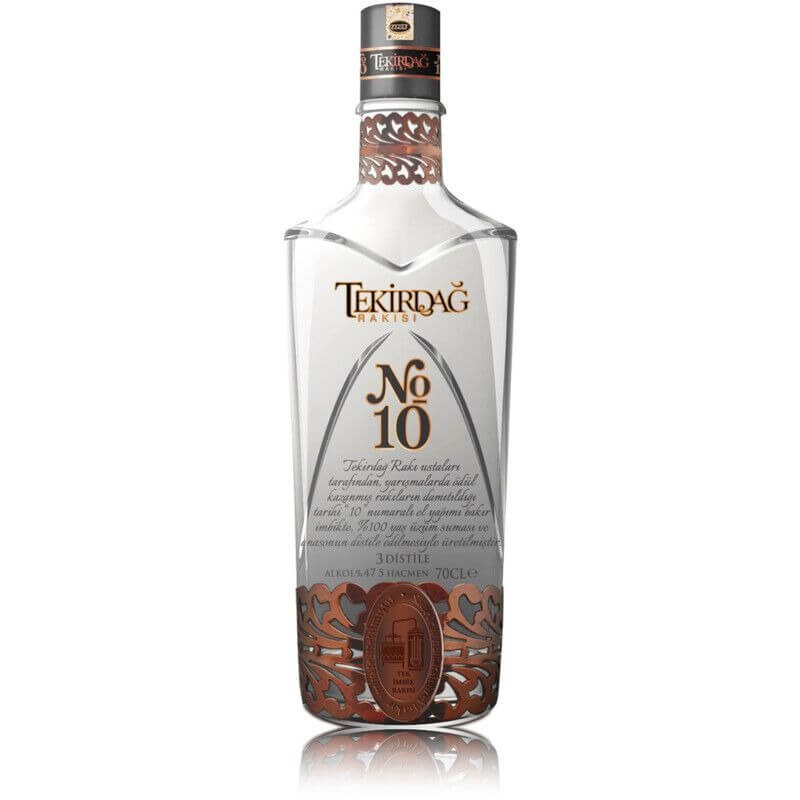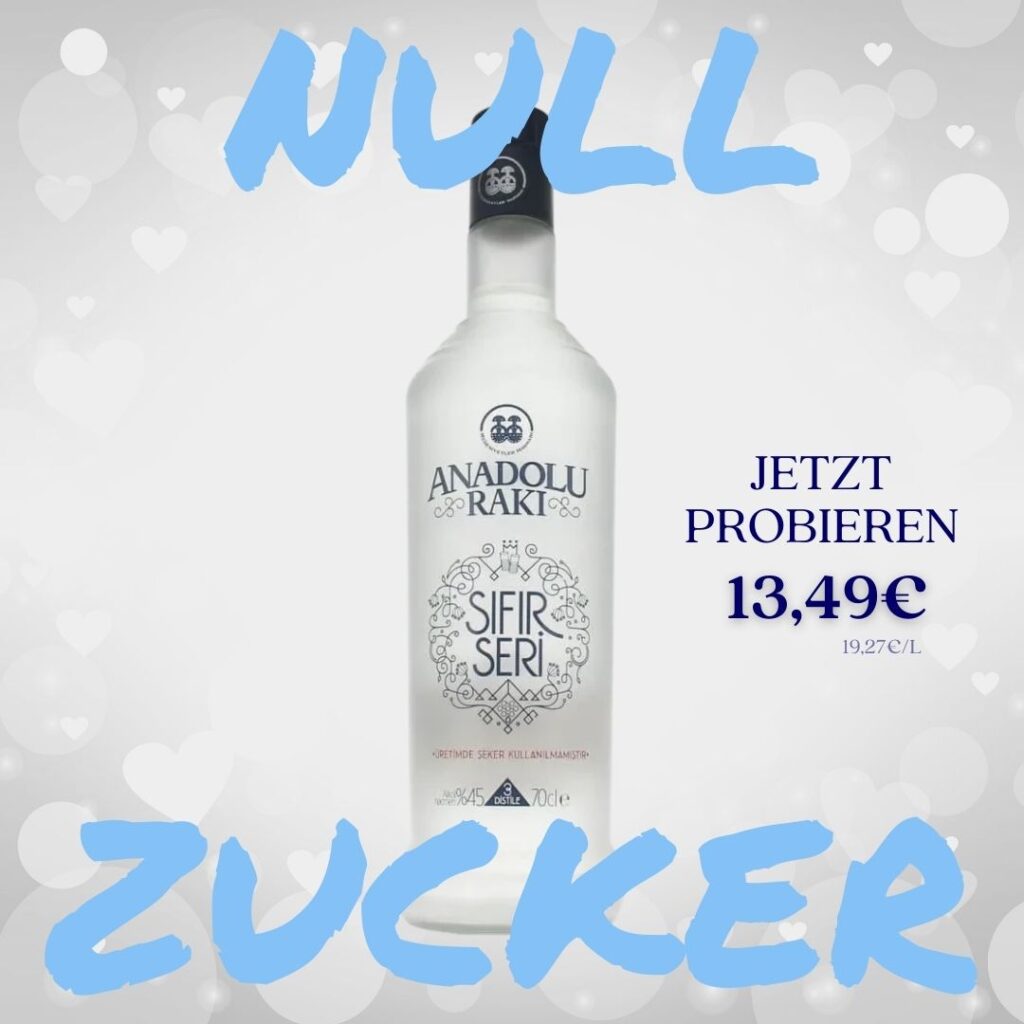
Information on the history and brand of Tekirdag Raki
The history of raki from the Tekirdag region began in 1880. In the Ottoman Empire, the private production of raki was permitted for the first time and the then Minister of Finance, Sancazada Ragip Pasa, opened a raki factory on the road from Tekirdag to Istanbul. The name of the first officially registered raki brand was Umurca Raki.
Which region does Tekirdag Raki come from?
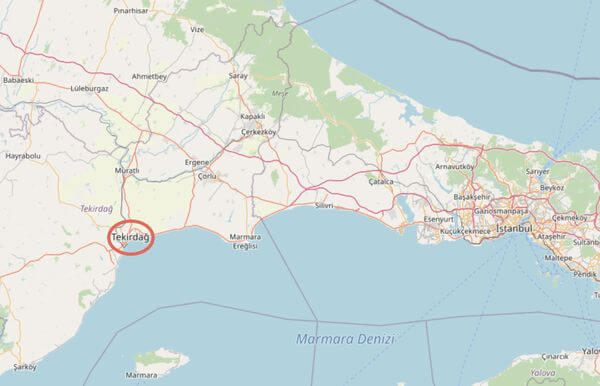
© Openstreetmap.org
Tekirdag is a harbor town on the Marmara Sea, about 140 km west of Istanbul. Located in the European part of Turkey, more precisely in the province of Thrace, the area around Tekirdag has always been well known for the cultivation of wine.
And since grapes are also the basic ingredient of raki, the name of the village of Tekirdag was associated with the production of raki from an early stage. Over time, various well-known raki brands from the area in and around Tekirdag came onto the market, for example from Mürefte.
Raki from the Tekirdag area, Tekirdag Raki.
Tekirdag raki at the time of the state alcohol monopoly
In 1942, a law was passed that placed the production of alcohol under a state monopoly. In the many centuries before this, there had been a widespread raki culture in society, which found expression in many manufacturers and brands, but also in special glasses, carafes and other table utensils, which were witnesses to a sophisticated raki culture.
As a result of this law, all previously known raki brands gradually disappeared from the market, and the raki diversity of the early Republican period came to an end.
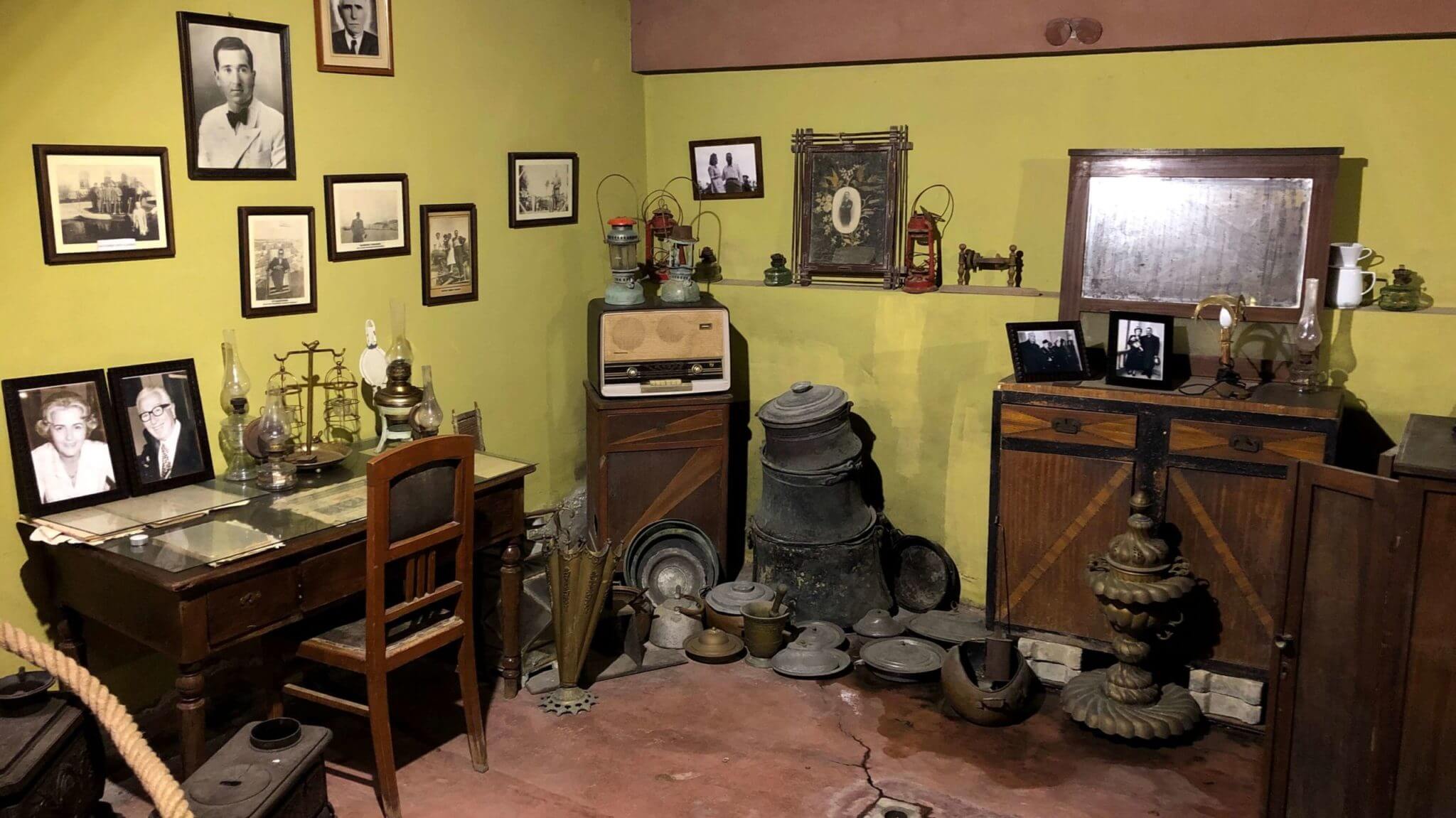
Historical living room
The state institution that controlled the production, distribution and sale of alcohol from then on was called Tekel. From July 12, 1944, all private production facilities and factories had to cease operations for good.
In 1944, the first raki was introduced by the new state monopolist Tekel, which took account of this development. The name was Yeni Raki – New Raki.
What is the best Raki?
In the days of the alcohol monopoly, all raki came from state-controlled factories. At first there was only the Yeni Raki brand, i.e. only one type of raki. The good thing about this was that the production processes were standardized and the average quality of the raki had increased. The disadvantage was that, in principle, all rakis tasted the same.
Everything was Yeni Raki – only the one from Tekirdag was better
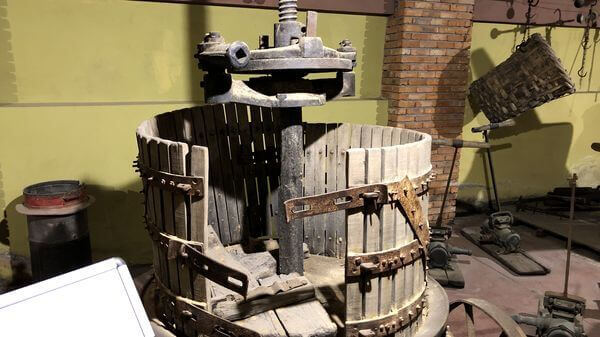
Tekel established production facilities for raki and other alcoholic beverages in Turkey’s three largest cities, Istanbul, Ankara and Izmir. Other locations included Canakkale, Bilecik, Diyarbakir, Gaziantep and Tekirdag.
In addition to raki, wine, beer, cognac, gin, vodka and even whiskey were also produced here. The centralization of production ensured, among other things, that there were now uniform standards that could be constantly developed further. There was enough money to carry out research and development, not only in the production of raki, but also for the cultivation of the basic products grapes and aniseed.
In 1967, the production of Tekirdag Raki began in the production plant built there by Tekel. The factory quickly made a name for itself, because although all the factories throughout the country were supplied with the same grapes, raisins and aniseed by the monopoly company, the raki from Tekirdag simply tasted better to people.
The secret – the artesian spring

This special taste was attributed to the water used there, all other ingredients being equal. The water came from an artesian well in the Corlu district, i.e. a well where the water flows out naturally and does not have to be pumped out.
People preferred the raki produced in Tekirdag and tried to distinguish it from the products produced by Tekel, which were of course the same throughout the country. This gave rise to rumors that the location of production could be identified by hidden clues on the bottles. „Tekirdag Raki “ simply became a synonym for high-quality raki.
Today’s Tekirdag raki owes both its name and the high quality associated with it to this period. For example, foreign delegations came to visit the factory to buy the Tekirdag Raki produced there and take it back to their home countries, so that the local raki became known beyond the borders of Turkey.
The year 2000 – The „Tekirdag Raki“ brand is born
This consumer preference did not go unnoticed by the managers at Tekel, and so in 2000 they created their own brand, „Tekirdag Raki“, which was the last official brand to be launched by the state-owned company. It was the first raki to be made from grapes from just one region. To this day, it is associated with the high-quality production methods of the manufactory and the raw materials used: grapes, aniseed and water.
Buy the most popular varieties of Tekirdag Raki
In 2004, Tekel, and with it Tekirdag Raki, was privatized and bought by the Mey company. In 2011, the British spirits world market leader Diageo took over the Mey company, to whose group of companies it still belongs today.
Tekirdag Raki – myths and stories
There are many myths and stories surrounding the raki factory in Terkirdag. One of the most famous is certainly the legendary copper kettle with the number 10. According to the raki masters of the time, this copper kettle, which was handmade in France, produced the best raki in the distillery. This is evidenced by several international awards for products from this very kettle. When the distillery moved to a new production building just outside Terkirdag, it had to be relocated at great expense.
Even today, the bottle with its body encased in a copper basket bears witness to this almost legendary kettle. At 47.5%, Tekirdag Raki No. 10 has a relatively high alcohol content compared to other rakis and is produced from pure grape alcohol in triple distillation only in this copper pot still.
This is why excellent raki is produced in Tekirdag
Another myth about the quality of Tekirdag raki tells of a grumpy and often angry manager. He was appointed head of the raki production plant in Terkirdag, although he was said to have no great knowledge of raki. All the employees and workers were therefore in great turmoil because of the reputation that preceded this manager.
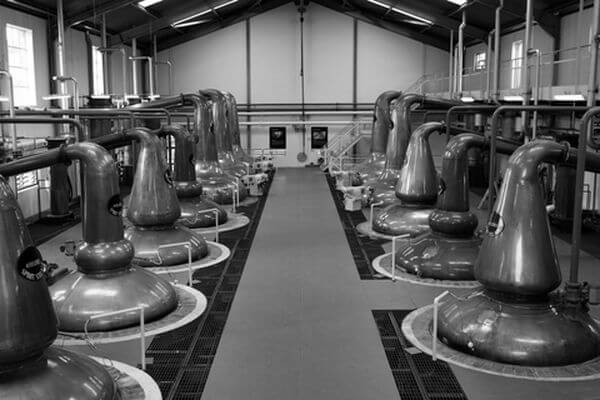
On his first visit to the factory, he began the tour. When an employee asked if he liked what he saw, the manager became angry and asked what he was supposed to like about the factory. The employee withdrew in shame without answering, which made the manager even angrier, and he then started kicking around, throwing objects on the floor near him and destroying parts of the production plant.
The employees sat down together the following day to discuss the problems. What had gone so wrong that the supervisor reacted in this way? You worked out appropriate improvements and in a short time you had managed to rebuild production with twice the efficiency.
Then came the next visit from the grumpy manager. He again inspected the production facilities. Once in the packaging area, he took a bottle of raki out of a box, opened it and smelled the lid. He grimaced in disgust and began to pour the raki on the floor. All the employees around him were shocked. „What didn’t you like about this raki?“ they asked. He screamed and simply replied, „Who is supposed to like this raki? Now shut up!“
The raki master then sat down with his colleagues again and they tried to find out what was wrong with the raki. They tried and tried. For months.
When they had finished, they invited the manager back to show him the progress they had made. When they got back to the packaging area, they offered the manager a bottle to taste. He opened the bottle again, smelled it and was naturally very suspicious.
He took a glass, tasted it and after a slight hesitation, he finally started shouting again and asked „What’s good about this raki?“ and started turning the bottle upside down to pour it on the floor again. At that moment, the raki master could no longer contain himself.
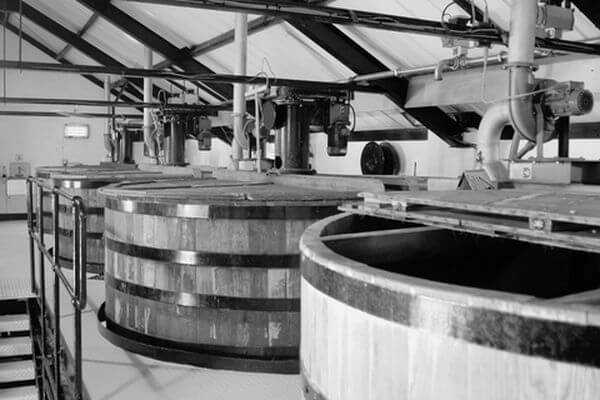
He jumped out of the crowd of spectators and grabbed the bottle in the manager’s hand, saying „I won’t let them spill our masterpiece! What’s good about this raki? Can’t you taste it, or don’t you know anything about raki?“
The crowd froze, as everyone naturally expected an explosive outburst of anger from the manager. But the opposite happened, the manager remained calm. „No,“ he said, „I really don’t know anything about raki. But I do know something about people. I’ve only ever made your raki bad. But none of you found fault with it. None of you liked your own product so much as to defend it against my scolding. But today, for the first time, they grabbed the bottle to protect it as if it were their own child. Now I am also satisfied with the quality“.
We hope we have been able to tell you a little more about the story of Tekirdag Raki. Today, the Terkirdag brand belongs to the Diageo group and is marketed together with Yeni Raki. You can find the latest information on Terkirdag Raki on the manufacturer’s homepage. We are also pleased to be able to offer you products from this traditional company.

